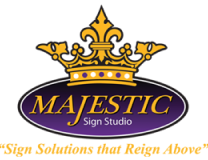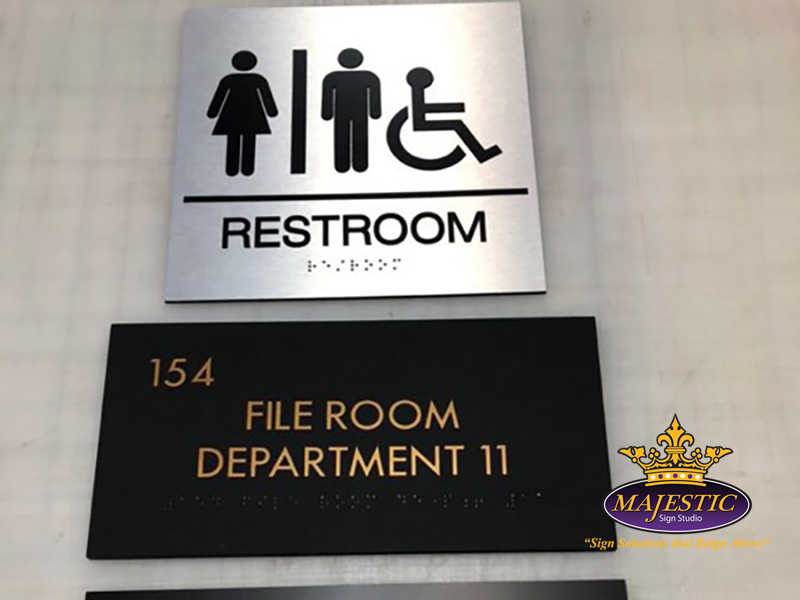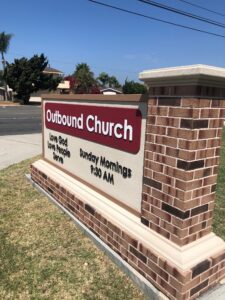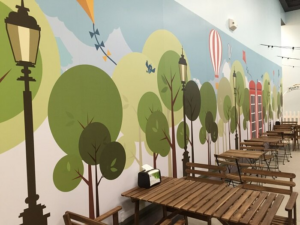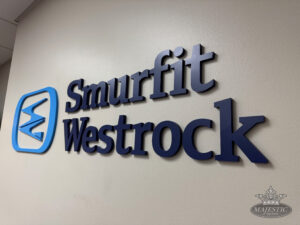Buildings and organizations are required to install ADA compliant signage as part of the Americans With Disabilities Act, established in 1990. In order to meet the ADA requirements, braille signs, and signs using graphics or larger fonts are used to effectively communicate with visitors who may be legally blind or visually impaired. For example, ADA restroom signs, signs that relate to safety, and wayfinding signs go a long way in making it easier for everyone to navigate your facility.
As mentioned, braille signs are used as part of ADA signage, but there’s actually much more to ADA compliance than simply raised characters. If you’re a new business or a business in need of updating your ADA signs in California or nationwide, know that there are many different elements to consider in order to be compliant.
- Location.
Specifically, signs identifying rooms must be located adjacent to the latch side of the door. - Height.
Overhead signs must be at least 80 inches above the ground. Wall mounted signs should be 27 inches from the floor, but should not exceed 80 inches. - Color.
Background and characters should be created in contrast. - Finish.
Signs should have a non-glare finish. - Raised characters.
Braille signs must be created using uppercase letters. Letters should range from 5/8 inch to two inches in height and raise by 1/32 of an inch from the background. - Pictograms.
Pictorial representations of the accessibility symbol should be shown in standard style.
Types Of ADA Signs That May Be Required
When you’re planning for your ADA signage, know that there are several types of signs outlined by ADA laws. Although there are requirements and guidelines to follow, custom ADA signs can still be brand specific and include your logo and brand colors.
ADA sign types include:
- Identification signs.
These signs help to identify a particular space or a room, such as ADA restroom signs. - Informational signs.
Ensure you have the necessary signs to provide details about space or area, such as how to pay for parking or where to drop off forms. - Directional signs.
Wayfinding signs help direct visitors to reception areas, meeting rooms and different spaces in your facility. - Overhead signs.
These are signs mounted on overhead support, such as wall signs and ceiling signs.
Safety signs. ADA signs are required to identify exits and stairwells, as well as potential hazards.
Get The Right ADA Signs For Your Business From Majestic Sign Studio
No matter what type of business you’re in, you need to ensure that you’re meeting the requirements for ADA signage. Creating custom ADA signs will create a positive experience for all visitors and employees, which will support your business success and your reputation. If you need ADA Signs in California or nationwide, contact Majestic Sign Studio. We have extensive experience in creating branded and compliant ADA signs, and our team will make sure you have what you need to support your success. Call Majestic Sign Studio to arrange an ADA signage consultation and get the right signs for your needs.
